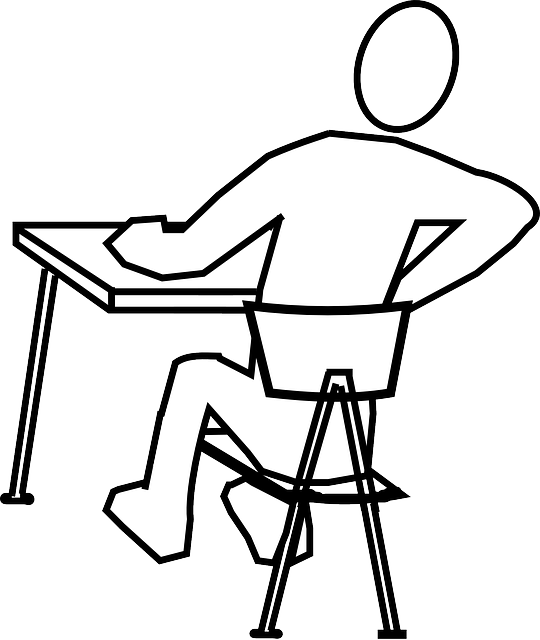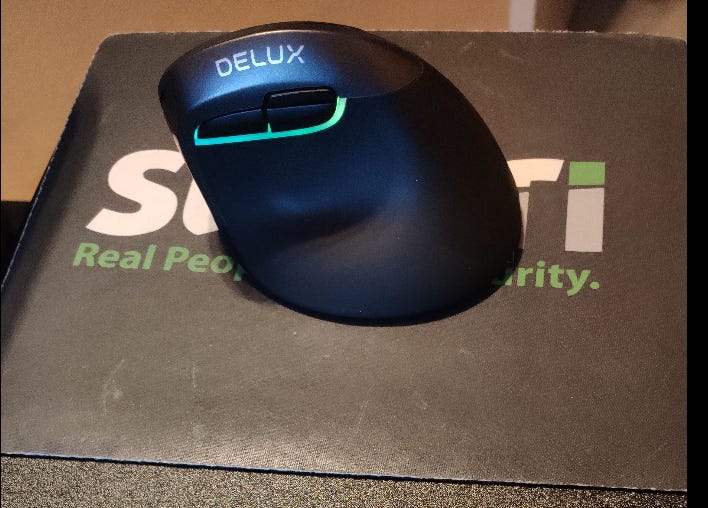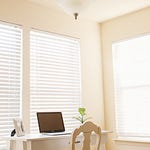Regular Death by Tech readers know that I just took a week off for some R & R. I always feel physically great after a week off. All my little aches and pains from work are gone, and I’m ready to get back into it. For the most part, my work-related strains and injuries are pretty minor. I work from home and because of that, I have a great deal of flexibility in my work environment which helps keep these work injuries at bay. But it got me to thinking: why do we live in a world where work-place repetitive stress injuries are even a thing? We should be past that by now.

Repetitive Stress Injuries (RSIs) were almost unheard of until the 20th century. I am sure some repetitive tasks caused them, but work wasn’t the all-consuming thing it is now and we did not have entire clinics and organizational units devoted to keeping us perpetually in that state of almost pain that our work lives create. People had more active lives before cars and computers shrunk the world. They had a thing called balance before we started cramming everyone into cubicles and rewarding those who worked longer than necessary hours. RSIs are created by the crappy work life that most of us have to endure in much the same way gyms are a self-licking ice cream cone. If we had healthy lives, we would not need gyms. If we have healthy lives, we would not get injuries from doing silly things like pushing a mouse back and forth all day.
My particular injuries are usually novel - I don’t normally get the exact same RSI repeatedly, but there are general categories that my injuries fall into. Eyes, arms, back and sometimes feet. OK, ok…that is pretty much my whole body.
Eyes
The most distressing category is my eyes. Humans tend to blink less when they’re staring at a screen. That’s not a problem for most folks because your eyes can recover after a slow-blinking movie just fine. But for those of us that stare at screens all day long, it takes a toll on our eyes. Many office workers have dry eyes because years of unnaturally slow blinking causes the oil glands in our eyelids to decrease function which is the primary way our eyes are lubricated. In more serious cases, the eyes can become so dry that calcium deposits can grow under eyelids which aggravate the problem even more because they scrape the surface of the eye at every blink.
Treatments for dry eyes range from hot compresses daily to re-open the oil glands, all the way up to minor surgery to remove the calcium buildups. Eye drops are a temporary measure but generally can’t help long-term. So, keep hydrated, use the compress, and hope for the best. That’s all I got for eye treatment.
Arms
I think we’re all familiar with forearm and wrist/hand RSIs by now. The most widely publicized is the old “carpal tunnel syndrome” which is definitely painful and can be hard to fix but is not the most common RSI. Personally, I get aches and pains in my lower forearms and, believe it or not, the base of my index fingers. Weird, right? I get this condition where rotating my hand, such as I’d do to twist a doorknob, will send shooting pains up my index fingers. I am pretty sure that one comes from the way I hold my mobile phone, which I use constantly during the day.
Treatment for those types of RSIs is to simply move things around on my desk and use my phone less. I have two mice on hand; a typical optical mouse and a very atypical “vertical mouse”. The vertical mouse took a lot of getting used to, but because my arm is held in a completely different way than a normal mouse, switching and forth between them works very well to fend off the old RSI.

A great way for me to use my phone less is to uninstall Slack. The vast majority of my work use on my phone is Slack and my removing the app I end up using my phone hours less each day. If you take a look at your screen time app (depending on what type of phone you have), you may be surprised at how much time you spend on work apps. Removing a work app, even for a few days, can dramatically change your habits and give your hands a break. This technique can work for other heavily-used apps as well, depending on your work situation.
Back
The back is a tricky beast and I have had a long battle with mine. I injured my back about 10 years ago and my doctor at the time was a “walk it off” type of guy so I did not receive adequate medical treatment for it to heal properly. Because of that, I have some scar tissue where the injury occurred and because scar tissue does not stretch as nicely as muscle or skin, my back is always tight and I have a heightened potential for re-injury. I am extremely cognizant of this and take lots of precautions which is why I can still lift and install 90lb servers in data centers by myself despite this injury.
Treatment for my back involves a few things. First, I have a standing desk that my employer provided for me (thanks!). This allows me to raise and lower the desk to different positions during the day. For meetings I generally stand, for coding, I generally lower it and sit, but the point is that I can do anything I want. Neither sitting nor standing is a cure for ergonomic injuries, but changing positions definitely is. I also have two different chairs - a “standard” office chair and a wooden stool. I switch between them frequently and because each chair forces me to sit in a different posture, that also helps keep the RSIs at bay.
Feet
I was surprised when I started getting RSIs in my feet. Like, who has ever heard of such a thing? We all know about foot ailments like plantar fasciitis, but this is not that. This is a pain in my feet that I finally figured out stems from a uniquely work-from-home scenario: I don’t generally wear shoes in the house. Not a problem for regular folks, but when you work from home that translates into “I almost never wear shoes” because I am not commuting to an office for work. That can cause problems with your feet if you need the support that shoes provide. I now have a set of designated indoor sneakers that I wear and my foot pain is gone.
We’re fixing the forest, not the trees
Current ergonomic workplace practices seek to fix the symptoms, but not the root problem itself. Your office purchased a bunch of work stations that are suitable for statistically average people. Most people are this height with this length of arms, therefore you need a hundred of this chair and this desk. When employees find that these tools are not working for them, the ergo folks start bolting stuff onto that work station to try to make it fit. They add ergonomic mouse pads and keyboards, specially adjustable chairs, and monitor arms to better position the screens. Sometimes that works, but those are all kludges that typically just make the problem bearable instead of actually fixing it.
The reason that workplace ergonomic issues are hard to solve is that the entire office work experience is a made-up fantasy that is fixated on the age-old desk. Everything at work surrounds your desk so every solution is an attempt to fix the desk. A true solution would get rid of the desk. Well, I don’t mean that literally - we all need some hard surface to put our stuff on, but de-emphasizing the desk is where I am going with this. If the desk wasn’t so central to everything, people can do what I do: move around freely, work in a variety of positions, and generally make my work life reflect a healthy, normal life that includes constant movement.
I’ve found that the only long-term solution to workplace RSIs is frequent movement. By changing position and moving around, you eliminate the “R” (repetitive) in RSI because simple changes in position change the parts of your body doing the work. That is my takeaway for you - move around more and you’ll feel better.










